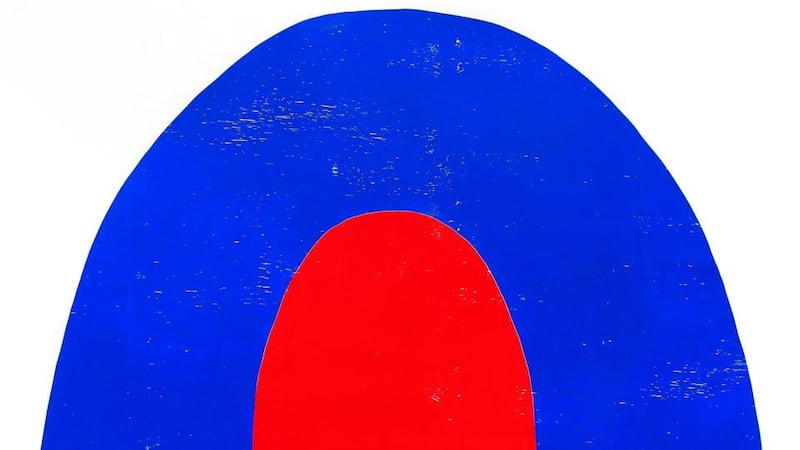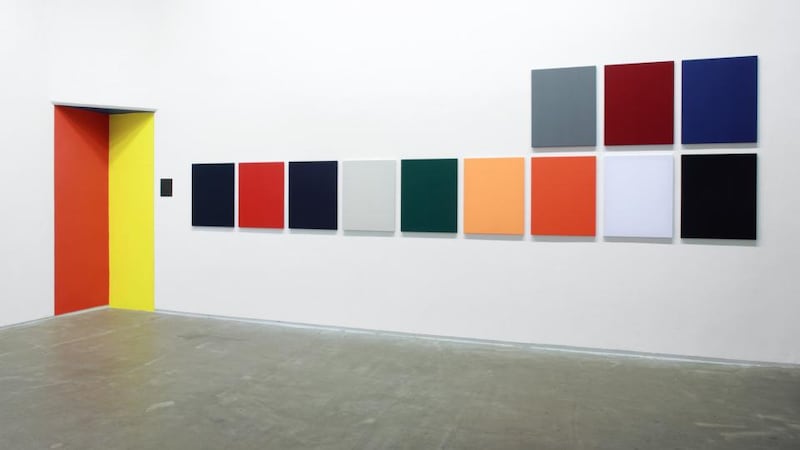Speaking about her exhibition at the Douglas Hyde Gallery, German artist Andrea Büttner returns to one word again and again: poverty.
Poverty, together with what she sees as the related concepts of shame and vulnerability, is one of her core concerns. Yet she doesn’t have a simply negative view of poverty as a state of debilitating physical want. In her preferred sense of the term, poverty is a virtue.
Hardly surprising, then, that she has been drawn to philosophical, religious, artistic and political explorations of poverty as a conscious choice, part of a good way of living in the world, as exemplified by St Francis of Assisi, say, or by certain religious communities, or the recent Occupy movement. There's also arte povera (literally, "poor art"), the influential 1960s Italian art movement that, through the use of humble materials and processes, sought to free art from the chains of the market.


Slip into the gallery from the bustle of Trinity’s Nassau Street entrance and it’s a bit like entering a church. Calmness prevails. Some brilliantly coloured panels recall the luminosity of stained glass. You can even sit quietly for a while on one of the exhibits, a simple bench made of plain wood planks resting on plastic packing crates. When she first saw the space, Büttner says, she liked that the architecture seemed to her church- or school-like.
Leaning towards London
Büttner was born in Stuttgart in 1972. She studied art, art history and philosophy in Berlin before moving to London, where she completed a PhD at the Royal College of Art in 2010. To her surprise, she really took to London, at a time when her contemporaries, German and otherwise, were gravitating towards Berlin. Now she splits her time between London and Frankfurt – the latter a much quieter place, she notes, and relatively close to the Mainz Kunsthochschule, where she teaches.
Originally she had it in mind to show a new series of glass paintings at the Douglas Hyde. In fact, the show was to have been called Glass. However, she says, "they are too recent and I'm not sure of them yet". Some existing glass paintings, as well as a group of what she terms fabric sculptures, several big woodcuts, sculptural objects found and cast, a site-specific painting installation and a recorded sound piece, make up her show. It sounds like a lot, and it is actually a concise survey of much of her recent work, but it's still fairly spare and restrained in feeling.
That sparseness has to do with her interest in poverty. She distills ideas and things down to a simple form. Her fabric sculptures, for example, are a series of square monochrome abstracts, each a slab of intense colour and quite beautiful. They are not painted – she has just stretched dyed fabric over wooden frames. Not just any fabrics, however. “The fabrics are used for various kinds of work overalls,” she says. They are linked to all kinds of occupations, from generic to quite specific, which is probably why some of the colours have an odd familiarity about them: we’re used to encountering them in quite different, functional contexts.
The idea stems from a video she made with a community of the Little Sisters of Jesus in Italy. Rather than being cut-off and enclosed, the Sisters live in the secular world and work. The particular community she encountered runs a funfair.
Humble materials recast
Büttner clearly likes the idea of taking a humble, workaday material and recasting it in a pure, aesthetic form in the privileged context of an art gallery. She does something very similar with individual blades of grass, and, although you might not immediately recognise them as such, zebra droppings. Many examples of both, the latter gathered in Frankfurt zoo, are cast in bronze and carefully displayed on a glass-covered table, like museum exhibits.
Grass is everywhere, taken for granted, and, she says, “we are taught early on to be ashamed of faeces”.
Similarly, she uses plywood shuttering to make her woodcuts. Shuttering is a disposable building material commonly used to shape cast concrete structures such as the gallery itself, as she points out. The woodcuts refer to St Francis of Assisi. There’s a connection here with the fabric sculptures. Francis’s father was a prosperous silk merchant. The saint renounced wealth and cast off his fine clothing in favour of a humble brown habit. The Occupy protestors, meanwhile, lived in tents – another woodcut subject – in the midst of skyscrapers.
“For me, art is not a commodity for rich people,” says Büttner. “I don’t really have any interest in that.” Dispensing with market value, she is interested in something else. What? “I don’t know about you, but when I read a novel, or listen to a piece of music, or when I look at art, I’m searching for a friend.”
She hopes that people will visit her exhibition and absorb something of its atmosphere in that spirit. In terms of sources and references, there are, she agrees, “plenty of things that I could tell you as a visitor, but really you don’t need to know them to get a feeling for what the work is about”.
Andrea Büttner, Douglas Hyde Gallery, Trinity College Dublin, until March 19 douglashydegallery.com













